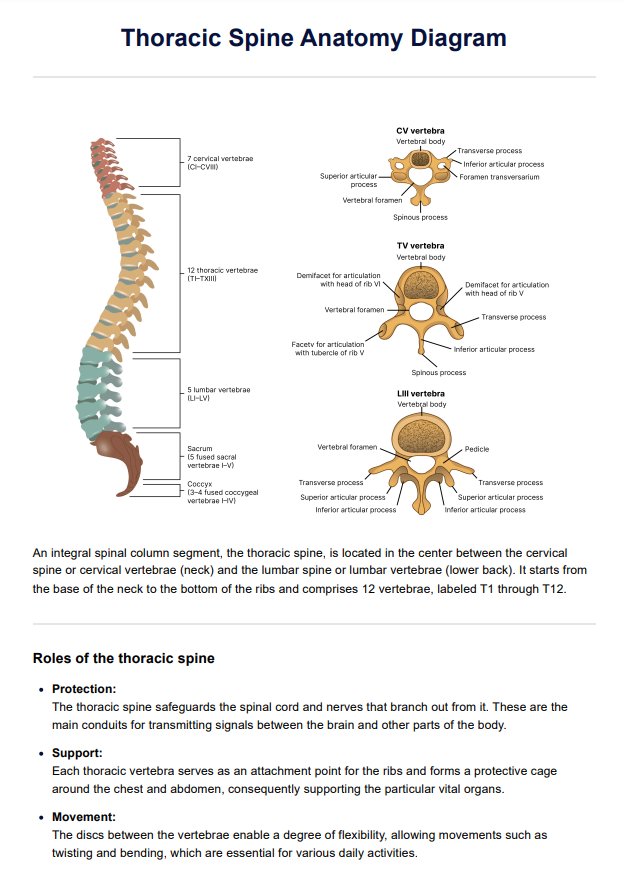Inflammation due to a sprain or strain and poor posture is the most common cause of thoracic spine pain.

Thoracic Spine Anatomy Diagram
Use our Thoracic Spine Anatomy Diagram to get a better understanding of the thoracic spine's anatomy, purposes, and functions for educational and medical purposes.
Use Template
Thoracic Spine Anatomy Diagram Template
Commonly asked questions
Should something happen to the thoracic spine, the ones that will be affected are the heart and lungs.
The nerve roots in the thoracic spine is in charge of sending sensory and motor signals for the areas from the upper back to the abdomen.
EHR and practice management software
Get started for free
*No credit card required
Free
$0/usd
Unlimited clients
Telehealth
1GB of storage
Client portal text
Automated billing and online payments











